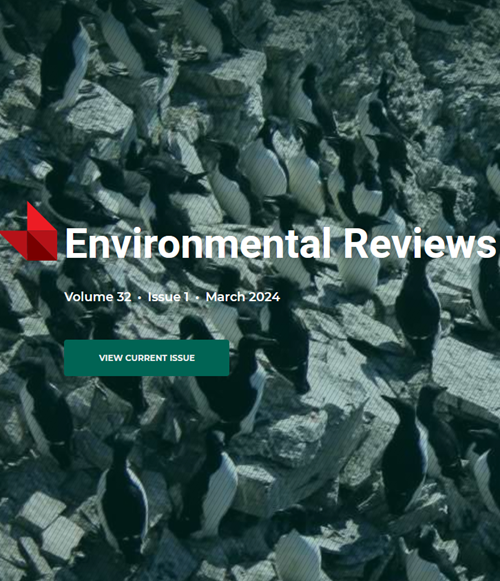地下水中草甘膦和氨基甲基膦酸(AMPA)分析研究综述
IF 5.1
3区 环境科学与生态学
Q2 ENVIRONMENTAL SCIENCES
引用次数: 6
摘要
草甘膦(N-膦酰基甲基甘氨酸)是近40年来世界上应用最广泛的除草剂。本综述旨在介绍和讨论草甘膦及其代谢产物氨基甲基膦酸(AMPA)对地下水污染的认识现状。根据已发表的文献构建了一个由48篇报道全球地下水中草甘膦和AMPA检测的报告和文章组成的数据集。特别注意对草甘膦和AMPA在地下水中迁移的现有研究进行分析,以调查地下水污染因素。本次审查中提供的信息强调了全球几个国家可检测到的地下水污染,其中许多国家的地下水质量超过了欧洲标准。草甘膦的农业和非农业应用都可能是重要的污染源,靠近农田是一个重要的风险因素。AMPA有两个主要来源,草甘膦和氨基多磷酸盐,但关于地下水中检测到的AMPA的来源,信息很少。草甘膦和AMPA向地下水的迁移在富含大孔的结构良好的土壤中可能很重要,通常通过优先流发生。强调了地下水深度与草甘膦和AMPA在地下水中的出现和浓度之间的反比关系;然而,研究中发现了一些差异。草甘膦施用后不久的强降雨造成草甘膦输送到地下水的高风险。还观察到地下水中草甘膦和AMPA的季节性趋势,与施用时间、农艺措施和天气条件有关。最后,提出了风险管理措施。本文章由计算机程序翻译,如有差异,请以英文原文为准。
Review of studies analysing glyphosate and aminomethylphosphonic acid (AMPA) occurrence in groundwater
The herbicide glyphosate (N-phosphonomethylglycine) has been the most commonly applied herbicide worldwide for the past 40 years. This review aims to present and discuss the state of knowledge concerning groundwater contamination by glyphosate and its metabolite, aminomethylphosphonic acid (AMPA). A dataset of 48 reports and articles reporting glyphosate and AMPA detection in groundwater worldwide was constructed from published literature. Specific attention was given to the analysis of available studies on glyphosate and AMPA transport in groundwater to investigate groundwater contamination factors. The information presented in this review highlights detectable groundwater contamination in several countries globally, with many cases exceeding European groundwater quality standards. Both agricultural and non-agricultural applications of glyphosate can be significant sources of pollution, and proximity to agricultural fields is a significant risk factor. AMPA has two primary sources, glyphosate and amino polyphosphates, but very little information is available about the origin of AMPA detected in groundwater. Glyphosate and AMPA transport to groundwater can be significant in well-structured soils rich in macropores, where it generally occurs via preferential flow. An inverse relationship was highlighted between the groundwater depth and glyphosate and AMPA occurrence and concentration in groundwater; however, some discrepancies among the studies were identified. Heavy rainfall shortly after glyphosate application poses a high risk of its transport to groundwater. Seasonal trends in glyphosate and AMPA in groundwater, related to application timing, agronomic practices, and weather conditions, were also observed. Finally, risk-management measures are proposed.
求助全文
通过发布文献求助,成功后即可免费获取论文全文。
去求助
来源期刊

Environmental Reviews
环境科学-环境科学
自引率
3.50%
发文量
45
期刊介绍:
Published since 1993, Environmental Reviews is a quarterly journal that presents authoritative literature reviews on a wide range of environmental science and associated environmental studies topics, with emphasis on the effects on and response of both natural and manmade ecosystems to anthropogenic stress. The authorship and scope are international, with critical literature reviews submitted and invited on such topics as sustainability, water supply management, climate change, harvesting impacts, acid rain, pesticide use, lake acidification, air and marine pollution, oil and gas development, biological control, food chain biomagnification, rehabilitation of polluted aquatic systems, erosion, forestry, bio-indicators of environmental stress, conservation of biodiversity, and many other environmental issues.
 求助内容:
求助内容: 应助结果提醒方式:
应助结果提醒方式:


